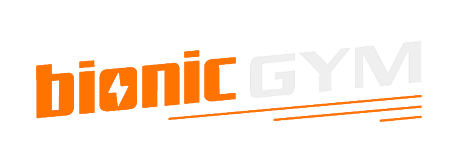The Scientific Proof
How and why it works:
We mimic shivering! A calorie is a unit of heat. When the body wants to warm up / burn calories it shivers. There is this resonant frequency of around 7-8Hz where the muscle fibers contract and relax optimizing energy consumption. The muscles cry out for oxygen and fuel creating a demand for blood – hence the heart rate increases and the lungs work harder. Special electrodes allow us to target concentrated impulses. Of course there is a little bit of magic in the formula. Even though the electrodes are only on the thigh we manage to bring in the calf muscles and the gluteals (bum) muscles.
Scientific studies:
All the graphs below are from peer-reviewed scientific literature. (BionicGym technology has been subject to a dozen scientific studies). The studies have been supported by European Space Agency, Enterprise Ireland, Bio-Medical Research Ltd, Hull University (UK), and University College Dublin (Ireland).

Calories burnt versus Intensity
Sitting at rest, you burn 1-2 calories per minute. At each mark (black triangle) there was an increase in the stimulation intensity. Caloric expenditure increased to 15Kcal/min – very vigorous exercise! (the American Heart Association defines ‘vigorous exercise’ as >6 METS or metabolic equivalents. This subject is exercizing not just vigorously but 50% above this threshold).

HR and oxygen consumption (VO2)
At rest the subjects heart rate is <60 as the stimulation intensity increases his heart rate increases – reaching his maximal rate of >185 bpm. (Also greater than his age-predicted maximal heart rate and equal to his maximal heart rate with voluntary /’normal’ exercise).

O2 uptake and Calories over 4 hours
At self-selected intensities this subject watched a couple of DVDs on a reclining physio-table. Oxygen consumption and cumulative calories are plotted.

Lactate Response -2 mins supra-max
Comparison of blood lactate levels post 2 minutes supra-maximal exercise (voluntary exercise and stimulation). Note for comfort the stimulation intensity should be gradually increased. This could not be done in this 2 minute experiment. The limiting factor is probably due to the subjects’ tolerance of the stimulation intensity within the 2 minute window rather than the physiological limit as maximal stimulation intensity was not reached.

Exercise to fatigue at 125+bpm
This experiment compares exercise-to-fatigue of stationary cycling and stimulation at a given heart rate (125-130bpm). Pedaling at 80 revolutions/min the resistance was adjusted to keep the HR at 125-130. For stimulation the intensity was adjusted. The subject was fasting overnight each time. The energy expenditure per min was higher for cycling. Near 4 hours, with resistance at zero, the subject was unable to continue pedaling. After 6 hours of stimulation the subject could have continued.

Increases in aerobic fitness -VO2max
Controlled Study over six weeks on healthy subjects showed statistically significant increases in maximum aerobic capacity / VO2max (VO2max is the ‘gold standard’ measurement of aerobic fitness).
Selected peer-reviewed publications in the scientific literature on this exercise technique (authored/ co-authored by Dr Louis Crowe):
The use of electrical muscle stimulation to elicit a cardiovascular exercise response without loading the joints. Caulfield B, Crowe L, Minogue C, Banerjee P, Clark A. Journal of Exercise PhysiologyOnline 2004;7(3):84-88.
In 1 line: “Increased heart-rate response and calorie burn possible and repeatable”.
Clinical application of neuromuscular electrical stimulation induced cardiovascular exercise. Caulfield B, Crowe L, Coughlan G, Minogue C. Conf Proc IEEE Engineering inMedicine and Biology Society. 2011;2011:3266-9. doi: 10.1109/IEMBS.2011.6090887.
In 1 Line: “Potential to work in micro-gravity /space”.
Neuro-muscular electrical stimulation training enhances maximal aerobic capacity in healthy physically active adults. Crognale D, Crowe L, Devito G, Minogue C, Caulfield B. Conf Proc IEEE Engineeringin Medicine and Biology Society. 2009;2009:2137-40. doi:10.1109/IEMBS.2009.5333972.
In 1 line: “…a viable alternative to cardiovascular exercise”.
Neuromuscular electrical stimulation can elicit aerobic exercise response without undue discomfort in healthy physically active adults. Crognale D, Vito GD, Grosset JF, Crowe L, Minogue C, Caulfield B. Journalof Strength & Conditioning Research. 2013 Jan;27(1):208-15. doi:10.1519/JSC.0b013e318252f5e5.
In 1 line: “It is acceptably comfortable at training intensities”.
Pushing out the limits of electrical stimulation. A case study in the aggressive use of an alternative to voluntary exercise. Crowe L, Caulfield B. British MedicalJournal Case Reports. 2011 Oct 11;2011. doi:pii: bcr0620114343.10.1136/bcr.06.2011.4343. [Note: only some of the techniques described are being made available at this moment].
In 1 line: “Shows-off the incredible potential of this technology”.
Electrical stimulation of unloaded muscles causes cardiovascular exercise by increasing oxygen demand. BanerjeeP, Clark A, Witte K, Crowe L, Caulfield B. European Journalof Cardiovascular Prevention and Rehabilitation. 2005 Oct;12(5):503-8.
In 1 line: “It’s really exercise! – Department of Academic Cardiology, University of Hull, UK”.
Prolonged electrical muscle stimulation exercise improves strength and aerobic capacity in healthy sedentary adults. Banerjee P, Caulfield B, Crowe L, Clark A. Journalof Applied Physiology. 2005 Dec;99(6):2307-11. Epub 2005 Aug 4.
In 1 line: “Even works for those who do not train much”.
Comparative effect of a 1 h session of electrical muscle stimulation and walking activity on energy expenditure and substrate oxidation in obese subjects. Grosset JF, Crowe L, De Vito G, O’Shea D, Caulfield B. AppliedPhysiology, Nutrition, and Metabolism. 2013 Jan;38(1):57-65. doi:10.1139/apnm-2011-0367. Epub 2012 Nov 12.
In 1 line: “Stimulation uses glucose/sugar as an energy source – even at low levels”.

